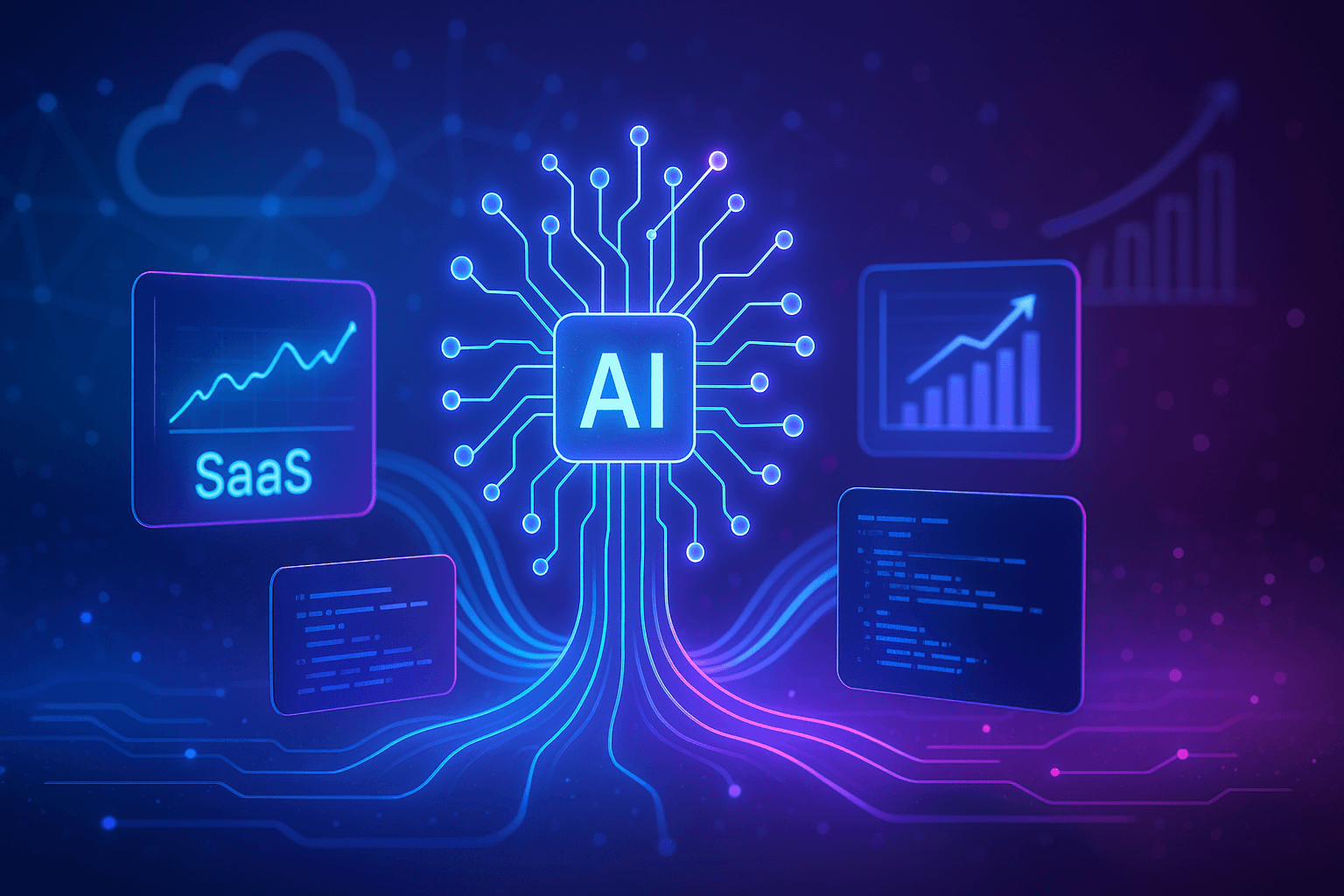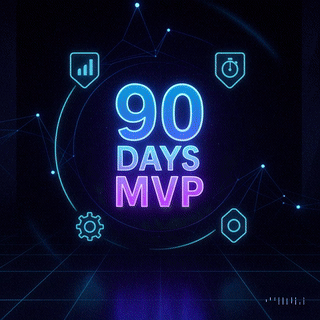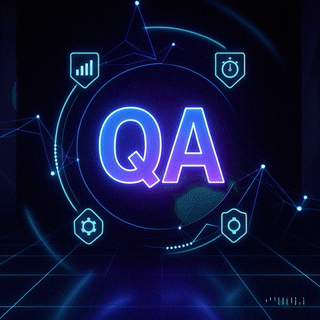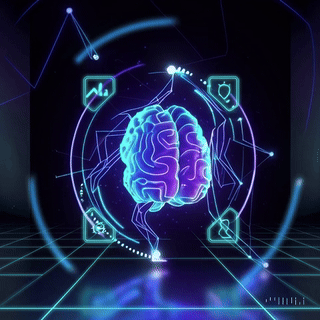Let's Make It Happen
Propelius Technologies
Based in India working worldwide
5 Ways AI Automation Enhances SaaS Application Performance
May 22, 2025
10 min read

5 Ways AI Automation Enhances SaaS Application Performance
AI automation is transforming SaaS performance by saving time, cutting costs, and improving user experiences. Here's what you need to know:
- Cut Costs: Reduce operational costs by 30% with smarter resource allocation and AI-driven scaling.
- Save Time: Automate up to 90% of manual DevOps tasks, slashing deployment times from days to hours.
- Boost Productivity: Teams see a 40% productivity boost with AI-powered tools for security, monitoring, and scaling.
- Improve User Retention: AI analyzes user behavior to reduce churn and enhance personalization.
- Prevent Issues: AI monitoring systems predict and fix problems before they impact users.
Quick Overview:
- Resource Scaling: Predict demand using AI analytics, cutting cloud costs by 20–30%.
- DevSecOps Automation: Streamline security and deployment with AI tools.
- User Behavior Analysis: Personalize experiences with real-time insights.
- Performance Monitoring: Detect and resolve issues in minutes, not days.
- Safer Code Deployment: AI ensures secure, efficient deployments.
AI automation is helping SaaS companies deliver faster, more reliable, and user-friendly applications. Dive in to learn how these strategies can improve your SaaS performance today.
11 Best AI Workflow Automation Tools to 10X Your Productivity in 2025
1. Resource Scaling with Predictive Analytics
AI-powered predictive analytics is reshaping how SaaS companies manage resources. By analyzing vast amounts of data, these tools enable precise scaling decisions that help cut costs and improve performance.
Using Historical Data to Train AI Models
AI models rely on historical data to predict future demand. They process various data streams to make informed scaling decisions, such as:
| Data Type | What AI Analyzes | Impact on Scaling |
|---|---|---|
| Usage Patterns | Peak times, seasonal trends | Plans for high-demand periods |
| Resource Metrics | CPU, memory, storage | Allocates resources efficiently |
| User Behavior | Session duration, feature usage | Anticipates capacity needs |
Recent research shows that companies using AI-driven analytics have cut holding costs by 25% and reduced resource shortages by as much as 65%. This is because AI can process both structured and unstructured data, offering more accurate predictions compared to manual methods. These insights allow real-time adjustments, ensuring cloud resources are used efficiently.
Smarter Cloud Resource Management
AI systems continuously monitor cloud usage, helping to avoid both over-provisioning and under-provisioning. Studies reveal that about 30% of cloud budgets are wasted due to inefficient resource use. However, AI-driven strategies can lower these costs by 20–30%.
Real-World Example: Cutting Infrastructure Costs with AI
A healthcare provider implemented AI-driven demand forecasting to address resource inefficiencies. The result? A 30% reduction in over-provisioning, significant cost savings, and improved reliability during peak times. The system also adapts over time, learning from new data to handle seasonal changes and unexpected surges effectively.
2. AI-Powered DevSecOps Automation
AI is transforming the way security and efficiency are managed in development operations. By automating critical processes, it’s streamlining security protocols and speeding up deployment cycles. In fact, a recent report revealed that 34% of CIOs have felt pressured to compromise security to achieve faster innovation.
AI Tools for Better Release Management
AI tools are changing the game for development teams, especially when it comes to managing security and code dependencies. For example, integrating automated security checks into CI/CD pipelines provides real-time feedback, which dramatically lowers the risk of vulnerabilities. This is especially important considering that 67% of developers admit a quarter or more of their code comes from open-source libraries.
| Security Feature | AI Enhancement | Impact |
|---|---|---|
| Code Scanning | Automated SAST & SCA | Detects vulnerabilities early |
| Policy Validation | Security policy as code | Ensures consistent compliance |
| Secrets Management | AI-driven scanning | Minimizes security breaches |
These tools also assist in resolving deployment errors, ensuring workflows remain uninterrupted.
Automatic Deployment Error Fixes
AI systems now go beyond detection - they can diagnose and automatically resolve deployment issues. Interestingly, only 25% of security teams currently have access to real-time, accurate reports on code and applications. With AI-driven auto-remediation, organizations can drastically cut response times, improve accuracy in fixing issues, and maintain continuous monitoring to proactively prevent problems.
Case Study: Faster Development Cycles
The integration of AI is helping bridge the gap between development and security, leading to faster and more efficient cycles. For instance, in the healthcare sector, Agentic AI has been deployed to handle administrative and technical tasks, resulting in notable improvements in deployment efficiency. This is critical, especially since 36% of organizations report challenges with siloed operations.
3. User Behavior Analysis for Better Experience
AI is revolutionizing how SaaS companies understand and cater to user needs. With a staggering 88% of SaaS users leaving after poor experiences, leveraging intelligent analysis has become essential to staying ahead. While resource scaling and deployment automation have already seen advancements, decoding user behavior is the next big step in improving SaaS performance.
AI Click Pattern Analysis
AI-powered neural networks are now capable of analyzing user interactions to uncover patterns and predict needs. This technology doesn't just help identify potential issues - it also drives real-time improvements to user interfaces.
| Analysis Type | AI Capability | Business Impact |
|---|---|---|
| Click Patterns | Tracks interactions in real time | 400% increase in conversion rates |
| Feature Usage | Monitors engagement levels | 30% reduction in operational costs |
Real-Time Interface Adjustments
AI-driven platforms are taking personalization to the next level by updating interfaces as users interact with them. These predictive insights allow platforms to make adjustments on the fly. For instance, Adobe Creative Cloud uses AI to monitor feature adoption, workflows, and friction points. By identifying bottlenecks, they prioritize updates that align with how users actually engage with the platform.
Case Study: Boosting User Retention
Take Zendesk as an example. Its predictive analytics system proactively identifies potential issues before users even report them. Here's how it works:
- Monitoring Engagement Patterns: AI tools analyze user behavior to preempt dissatisfaction and reduce churn.
- Tracking Feature Utilization: By studying how users interact with different features, Zendesk tailors its offerings. For example, analysis revealed that 32% of basic plan users frequently request advanced analytics, leading to targeted solutions that improve retention.
Slack also demonstrates the power of AI by offering guided tours and personalized suggestions. These tools simplify onboarding for teams and improve user satisfaction. It's no surprise that 35% of SaaS companies are already using AI, with another 42% planning to integrate it soon.
sbb-itb-2511131
4. AI Performance Monitoring Systems
SaaS applications thrive on efficiency, and keeping them running smoothly requires robust monitoring. AI-powered monitoring has transformed how teams identify and address issues. According to recent findings, these systems can uncover bugs in just minutes - tasks that previously required days of manual effort. Beyond quick fixes, AI monitoring systems excel at predicting potential problems before they disrupt services.
Setting Performance Standards for AI
AI monitoring systems rely on historical data to define baseline performance metrics. They pull information from various sources to paint a comprehensive picture:
| Data Source | Metrics Monitored | Impact on Performance |
|---|---|---|
| Server Logs | Resource usage, error rates | Pinpoints system bottlenecks |
| Application Metrics | Response times, throughput | Monitors user experience |
| Network Traffic | Bandwidth usage, latency | Enhances connectivity efficiency |
The magic lies in their ability to continuously learn and adapt. For instance, LangSmith provides live dashboards that let teams monitor critical metrics like costs and latency. Automated alerts ensure that any deviation from the norm is flagged immediately.
Early Warning Systems with AI
AI systems also act as early warning mechanisms, using specialized agents to monitor and respond to performance issues:
- LLM Performance Agents: Keep an eye on latency and accuracy, activating backup models when performance dips below acceptable levels.
- Data Processing Agents: Manage vector database access by partitioning data during heavy loads, ensuring smoother operations.
These agents work together to prevent disruptions before they affect users. This proactive approach is more than theoretical - it delivers measurable results, as illustrated in the case study below.
Case Study: Faster Problem Resolution
TechWave, an e-commerce platform, showcased the power of AI monitoring during high-demand periods. When response times spiked, the system quickly identified a database bottleneck and resolved it before users noticed.
Graphsignal's lightweight tracing system played a pivotal role, enabling:
- Automatic performance profiling
- Real-time error detection and analysis
- Predictive resource scaling during traffic surges
During the holiday rush, predictive agents accurately forecast demand and scaled resources accordingly. This ensured smooth operations even during the busiest shopping days.
5. Safer Code Deployment with AI
AI has reshaped how development teams handle code deployment, making it a smoother and more dependable process. Building on earlier strides in resource scaling and monitoring, modern AI systems can now spot potential problems before they hit production. The result? Fewer hiccups, better performance, and more reliable applications.
AI Code Change Assessment
AI-powered tools have become a game-changer for reviewing code changes during deployment. By analyzing code in real time, these tools can pinpoint bugs, security flaws, and inefficiencies, making static reviews more thorough and effective. Trained on vast datasets of code patterns, these machine learning models not only flag issues but also pave the way for safer and more efficient deployments.
AI Container Management
After rigorous code reviews, AI also plays a crucial role in managing containers, ensuring deployment pipelines are secure and efficient. Docker-based solutions, for instance, now leverage AI to optimize how resources are allocated and to guarantee smooth deployments across various environments. Here’s how AI is improving container management:
- Automated Resource Optimization: AI dynamically adjusts container resources to meet application demands.
- Intelligent Scaling: Predictive algorithms ensure applications perform optimally, even during peak usage.
- Enhanced Security: Continuous monitoring identifies vulnerabilities early in containerized systems.
Case Study: Reducing Deployment Challenges
One standout example of AI’s role in safer deployments is Kuberns’ adoption of AI-driven systems in early 2025. By connecting directly to GitHub repositories, their system automated provisioning, scaling, and cost management. The results were impressive:
- Infrastructure Costs: Achieved up to 90% savings through AI-optimized scaling.
- Deployment Speed: Cut deployment times from hours to just minutes.
In another instance, a hospital using Docker and Kubernetes to manage AI-powered diagnostic systems saw diagnosis times improve by 30%. Even more importantly, they maintained zero downtime during critical operations. These examples highlight how AI is setting a new benchmark for safe and efficient SaaS deployments, continuously learning and improving with each cycle.
Conclusion: Improving SaaS with AI Automation
AI automation has transformed how SaaS companies achieve better performance, offering practical tools and strategies to enhance every layer of the application stack. By leveraging AI-driven solutions, businesses can see measurable gains in efficiency, scalability, and user experience.
Tracking key performance indicators is essential. Tools like the OpenAI API Performance Dashboard and LangSmith help monitor metrics such as latency, throughput, and model accuracy. These insights empower teams to make data-backed decisions that directly improve performance.
"Effective performance optimization directly impacts a product's ability to attract and retain customers by providing an optimized, scalable, and engaging experience." - Arman Kamran
To stay competitive, consider implementing these strategies:
- Real-time performance tracking with multi-agent monitoring systems
- Strong communication protocols between frontend and backend systems
- Ongoing A/B testing to fine-tune features and functionality
The future of SaaS success hinges on continuous improvement through AI automation. By systematically applying these methods, businesses can deliver superior performance and exceed user expectations. Use these insights to refine your SaaS offerings and maintain a competitive edge in today’s fast-changing digital world.
FAQs
How does AI automation help SaaS applications cut operational costs?
AI automation helps cut operational costs for SaaS applications by simplifying workflows and reducing the need for manual effort. For example, machine learning algorithms can analyze data to fine-tune resource allocation, predict system demands, and avoid over-provisioning. This means you can keep infrastructure costs under control without sacrificing performance.
It also takes care of repetitive tasks like handling customer support queries or routine system maintenance. By automating these, your team can focus on more impactful projects. The result? Saved time, better efficiency, and long-term cost reductions. Many companies that implement AI automation report clear financial gains and improved ROI, making it a smart move for growing SaaS businesses.
How does AI help SaaS platforms improve user retention and deliver personalized experiences?
AI plays a key role in keeping users engaged and delivering personalized experiences on SaaS platforms by analyzing their behavior and preferences. For example, it powers personalized recommendations, suggesting products or services based on past interactions. This approach not only boosts user satisfaction but also encourages ongoing engagement. Think about streaming platforms recommending shows based on your viewing history or e-commerce sites showcasing products that match your browsing and purchase patterns - AI makes all of that possible.
It doesn't stop there. AI also drives targeted marketing campaigns by grouping users into segments and tailoring offers or promotions to their specific interests. Mobile apps, for instance, can send users customized discounts or loyalty rewards, motivating them to return and stay active. On top of that, AI can predict when users might stop using a service. Armed with this insight, SaaS providers can step in early, addressing issues or offering retention perks to keep users onboard, ultimately increasing loyalty and lifetime value.
How do AI-powered monitoring systems help prevent performance issues in SaaS applications?
AI-driven monitoring tools keep a close eye on critical performance metrics in SaaS applications - things like latency, accuracy, and user engagement. By analyzing these metrics in real time, these systems ensure everything runs smoothly behind the scenes.
Using intelligent agents, these tools constantly track components such as data processing and user interactions. If performance drops below a set standard, the AI can step in immediately. It might tweak system parameters or activate backup models to keep things running efficiently. This proactive method not only helps avoid service disruptions but also supports scalability and delivers a better experience for users.
Need an expert team to provide digital solutions for your business?
Book A Free CallReturn Back
Let's Make It Happen
Get Your Free Quote Today!
Propelius Technologies
Based in India working worldwide
CONNECT US
©2025 by Propelius Technologies.





